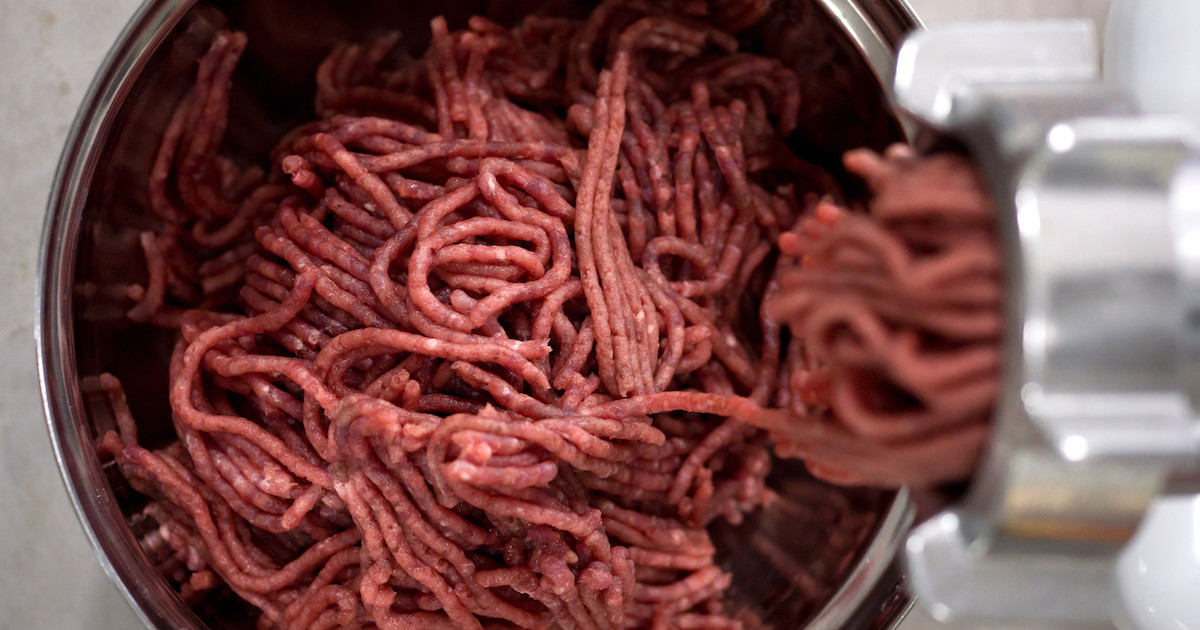For some hunters, adding domestic fat to venison is taboo. For others, it’s a necessity. One thing is for sure (and no more evident than here at MeatEater): at-home butchers have a wide range of preferences regarding fat content and there are no set rules. Here are some of our thoughts on adding fat to deer meat.
Does Venison Need Fat?
I know purists who want to believe that venison is perfect the way it is, but the truth is that adding fat at some point during the cooking process is beneficial. That doesn’t necessarily mean you need to add it while grinding—I often grind 100% venison that I plan to keep loose for recipes like Thai lettuce cups, taco meat, or Shepherd’s pie. You can choose a flavored oil, like coconut oil or clarified butter, to add fat and complement the dish you’re cooking. I usually double the amount of oil called for in a non-game recipe when browning the meat,
How Much Fat Should You Add?
When it comes to making anything that requires a bind or ingredient cohesion, such as meatballs and brats, I prefer to add fat. Fat is the emulsifying agent that allows the mixture to stick together and retain juiciness. Sure, you can use eggs to make it stick, but you won’t get the same mouthfeel since eggs don’t melt when cooked.
My rule of thumb is to add 10-20% fat when making venison burgers. The 90-10 ratio will produce a lean patty, whereas an 80/20 will be richer. On the other hand, an authentic sausage should be succulent. Fat is fundamental to creating a juicy product. Twenty percent is the minimum amount that I would add, but 30% is considered standard. Anything higher is a bit indulgent, but we won’t judge you.
Owning a kitchen scale comes in handy for grind proportions. The amount of meat that you have on hand probably won’t come to an even weight, and it’s perfectly fine to be flexible with ratios. I’m a fan of keeping the math simple, so I work in 5-pound portions. Here’s a rundown of the numbers:
10% = 4 ½ lb. venison, ½ lb. fat
20% = 4 lb. venison, 1 lb. fat
30% = 3 ½ lb. venison, 1 ½ lb. fat
40% = 3 lb. venison, 2 lb. fat
But, like I said earlier, there’s no right or wrong answer to this question. Ryan Callaghan sits on both ends of the spectrum, ranging from 100% venison for burgers to 50% fat for sausage. Perhaps Brody Henderson has the right idea; he grinds everything with 25% fat so it’s versatile for all cooking applications. Spencer Neuharth works with a rule of tens: 10% fat for burger, 20% fat for sausage, and 30% fat for everything else (snack sticks, summer sausage).
What Type of Fat?
I firmly believe the best type of fat to use is pork fatback (pure white fat from the back of a pig). Its flavor doesn’t overpower wild game and it has a soft texture. The downside is that it’s typically only sold in butcher shops, so you might have to call around and hunt it down. If you find someone who carries it, there’s a good chance they also have fresh casings to make sausage.
If fatback isn’t available, the next best choice is well-marbled pork butt. This fatty cut comes from the shoulder of a pig. It’s readily available and inexpensive at most grocery stores. The drawback is that you won’t know exactly how much fat you’re adding since there’s also meat in the cut. Another option is pork belly, which is the first choice for those who really disdain the taste of venison. Pork belly has a tendency to overpower the flavor of lean cuts, while fatback compliments them.
You can also use beef suet, but the texture and flavor aren’t as good as pork. Another option is tallow from wild game, although deer fat is very saturated and waxy. You can incorporate a little into the mix, but be cautious about how much you add to avoid bites that coat your mouth with wax.
Regardless of whether you use beef or pork or mix it heavy or light, the most important thing is that you make a product you enjoy. It helps to follow a few simple steps, like creating a quality grind and don’t overcook the meat, but there are few hard and fast rules for at-home butchering. When you’re ready to put this into practice, here are a few of our favorite recipes to try out.
Venison Breakfast Sausage Recipe
Venison Sloppy Joe Recipe
Greek Venison Meatballs Recipe
Read the full article here

